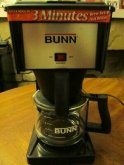John Frum
Tell me your problems
- Joined
- Nov 30, 2019
- Messages
- 15,233
I't my understanding that in the uk and/or europe a tea kettle can draw ~3 killowatts.
Thats double what my north american tea kettle can draw.
Pretty sure I could just swap plugs or hardwire it to 240VAC@60hz.
All this to get my coffee 90 seconds sooner.
UPDATE: 240VAC@60hz
Thats double what my north american tea kettle can draw.
Pretty sure I could just swap plugs or hardwire it to 240VAC@60hz.
All this to get my coffee 90 seconds sooner.
UPDATE: 240VAC@60hz
Last edited:




